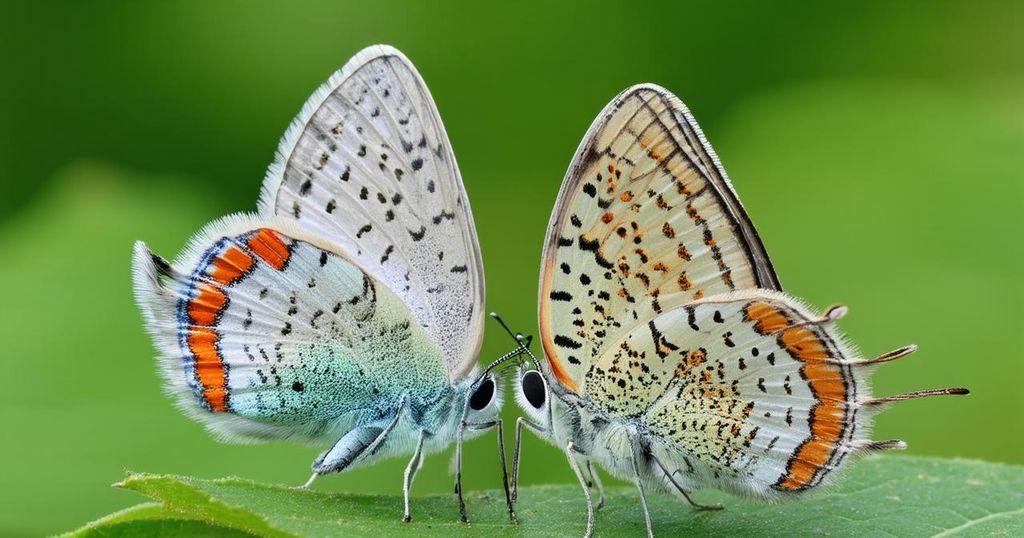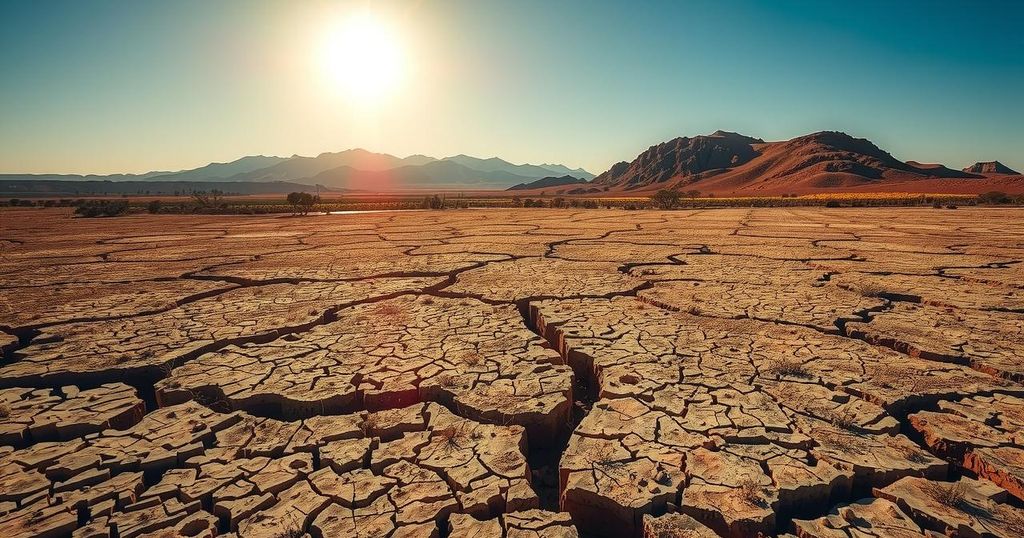The Impact of Climate Change on Greece’s Butterfly Populations
Climate change is adversely affecting butterfly populations in Greece, where approximately 237 species are struggling due to rising temperatures that lead to reduced food sources and altered life cycles. The MEIOSIS project, conducted by the University of Ioannina, aims to analyze body weight data from over 50,000 butterflies to understand the shifts in their physical dimensions due to climate stressors. Increased heat and wildfires further complicate their survival, highlighting the urgent need for conservation efforts.
In a controlled environment located at a zoo outside Athens, vibrant butterflies gather around orange slices, indulging in sweetness while sheltered from the adverse effects of climate change that threaten their existence across Greece and globally. Greece, which is home to approximately 237 butterfly species, is witnessing an escalation in challenges due to rising temperatures. These changes are resulting in a diminished food supply, condensed flowering intervals, and potential reductions in butterfly sizes. The situation is mirrored worldwide, with reports of significant decline in certain butterfly species in locations such as Mexico and Britain. According to Konstantinos Anagnostellis, an agronomist involved in a research initiative named MEIOSIS—derived from the Greek term for shrinking—climate change is having a detrimental effect on butterflies, as they depend on temperature for essential life processes including mating, reproduction, growth, and feeding. The MEIOSIS project, which is affiliated with the University of Ioannina in Greece, is focused on assessing the body weights of over 50,000 butterfly specimens collected over the course of a century. This research aims to model the correlation between climate change and the shrinking body size of butterflies. The increasing heat compels butterflies to migrate to cooler regions, where they may encounter reduced food availability. Additionally, the escalating occurrence of wildfires in Greece exacerbates this issue, leading to the destruction of grasslands and diminishing accessible food sources. As Mr. Anagnostellis notes, “If these plants are burned, there is a risk of direct mortality for the larvae, and we may not have adult butterflies to reproduce, forcing them to migrate to other areas.”
The phenomenon of climate change poses significant threats to biodiversity globally, and butterflies are among the species heavily impacted. Rising temperatures lead to declining food resources, toxins in the environment, and disrupted reproductive cycles for many insects. Greece’s unique butterfly population, with its diverse range of species, is particularly vulnerable due to the localized environmental shifts tied to climate change. The ongoing research project MEIOSIS aims to quantify these changes effectively, providing critical insights into the link between climate stressors and butterfly physiology over the years. Such research is essential to develop conservation strategies that protect these pollinators and preserve ecological balance.
In conclusion, climate change emerges as a formidable threat to butterfly populations in Greece and beyond, necessitating urgent research and conservation efforts. With rising temperatures leading to food scarcity and habitat loss, the viability of these species is increasingly in jeopardy. Collaborative efforts like the MEIOSIS project are vital in understanding the complex dynamics of climate impact on butterfly physiology, fostering informed strategies for their preservation amid a rapidly changing environment.
Original Source: kfgo.com




Post Comment